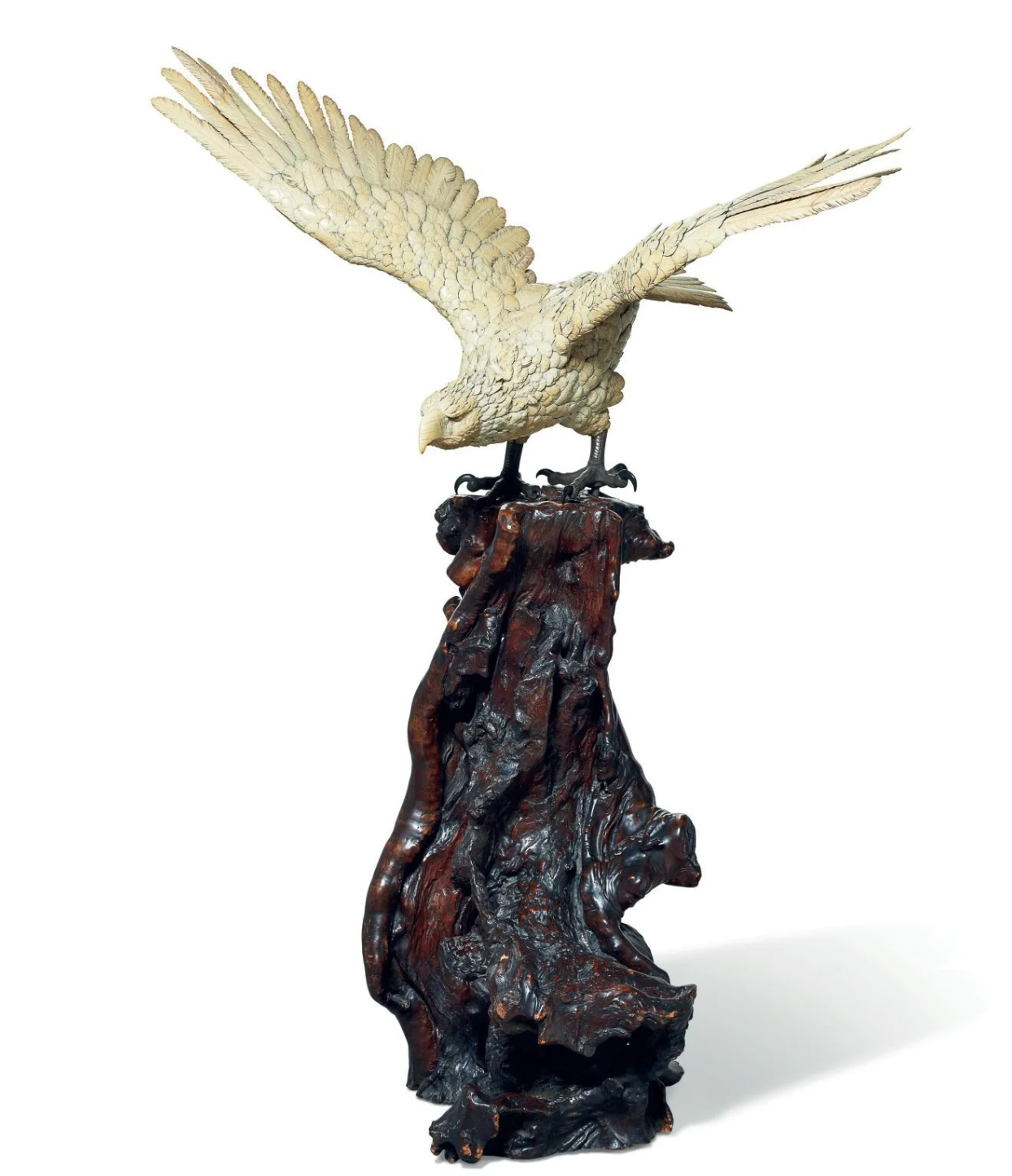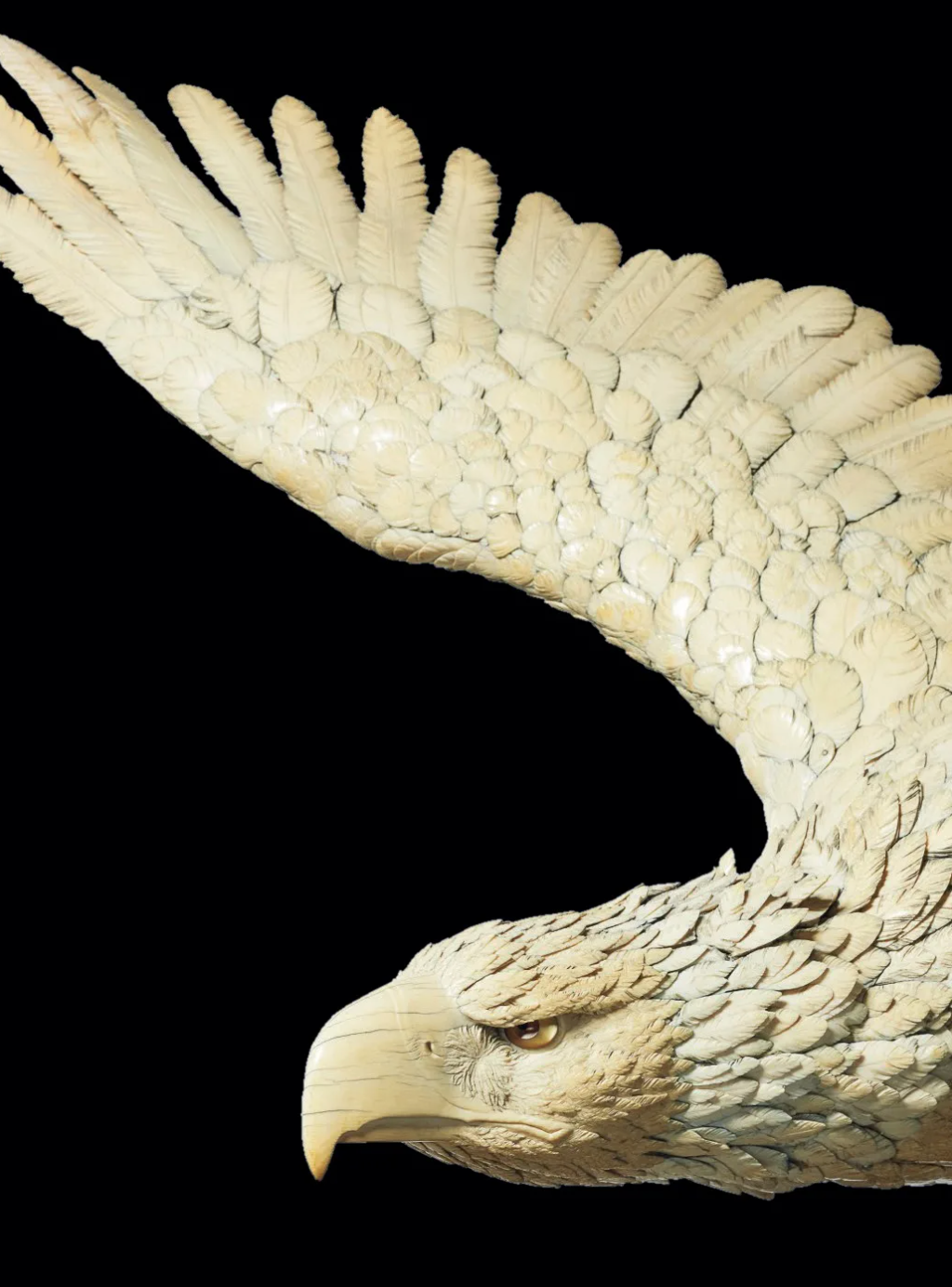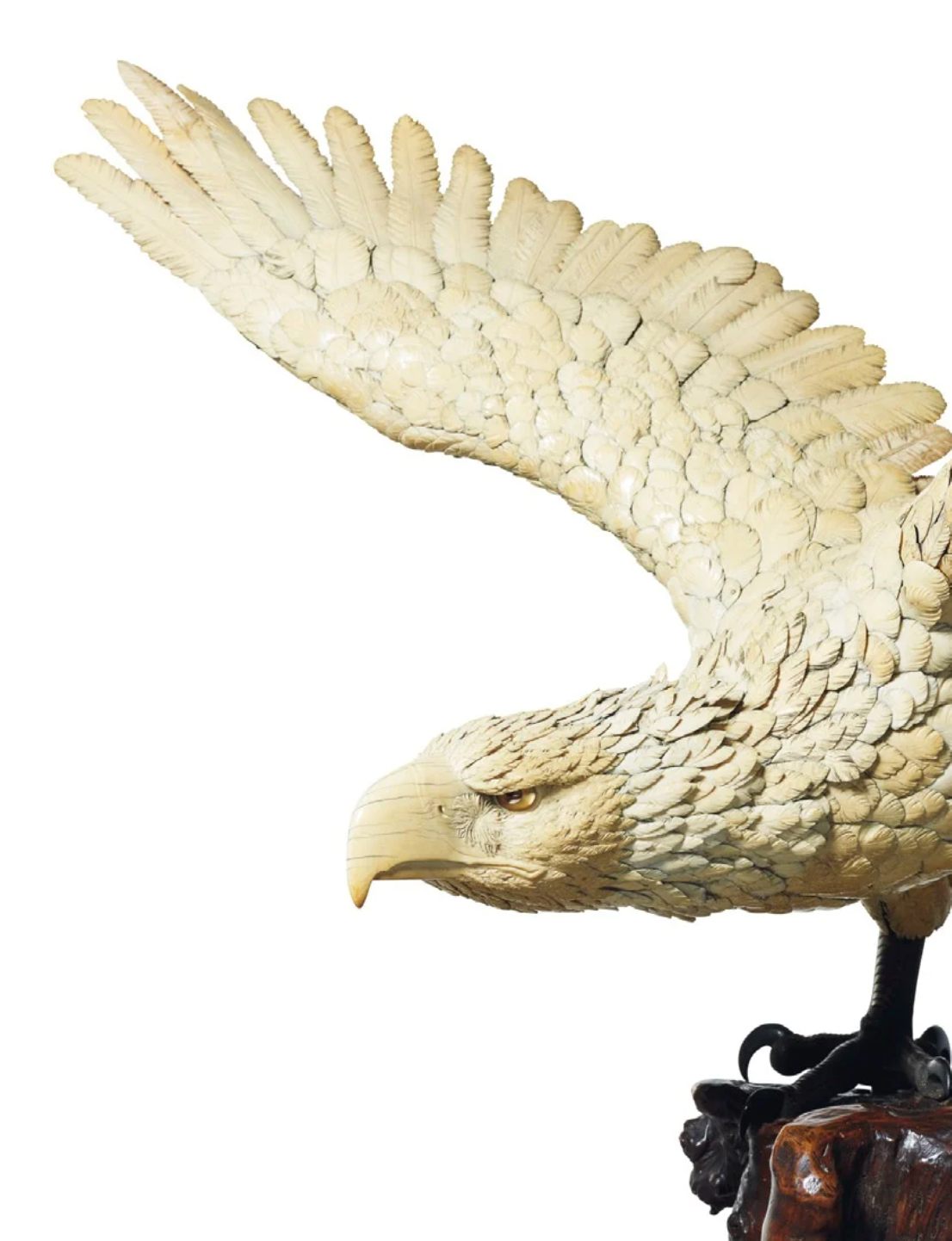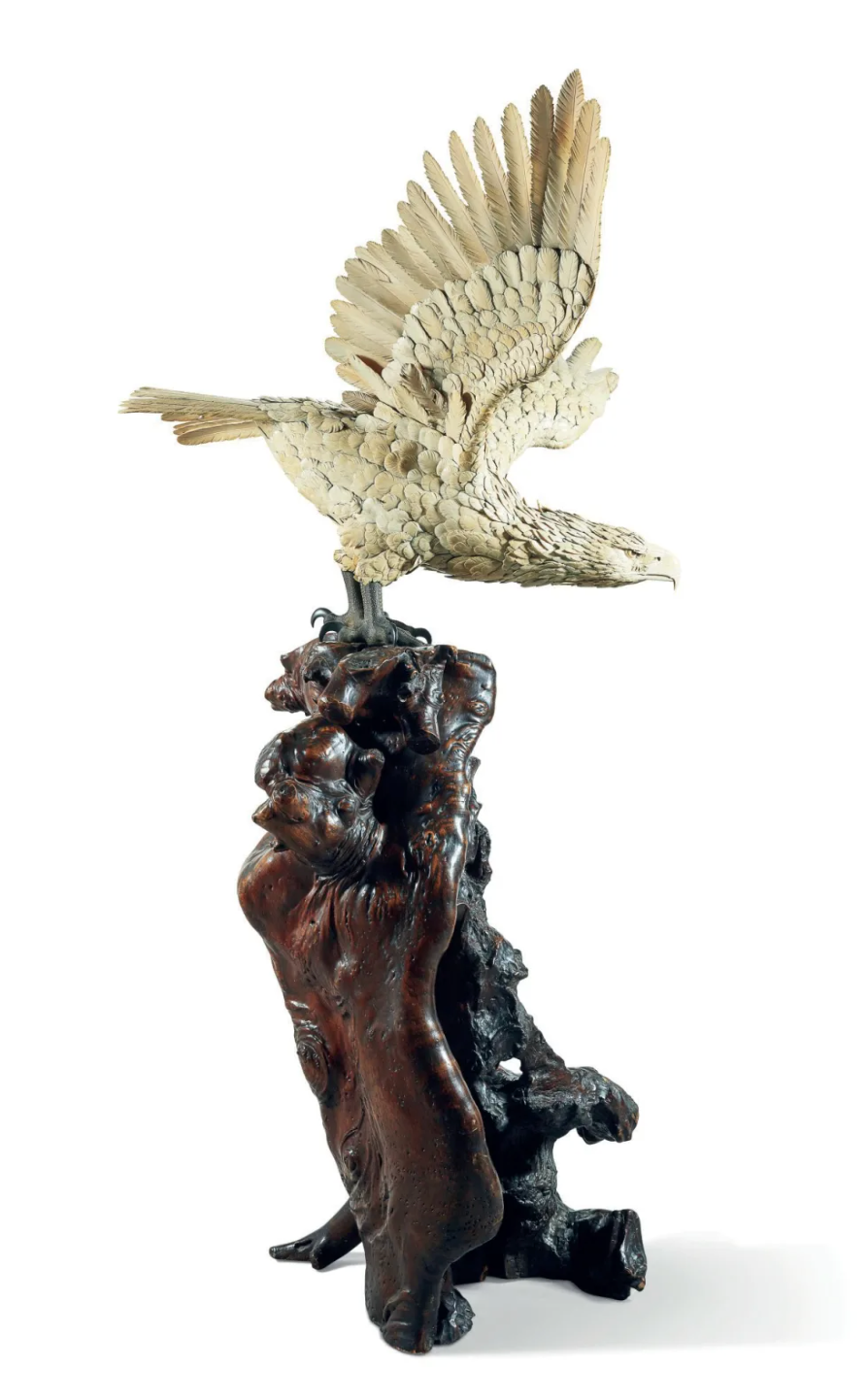Eduardo Cohen Watkins
Large Ivory Eagle, End of the 19th century, Japan
Large Ivory Eagle, End of the 19th century, Japan
Couldn't load pickup availability
Japan, Meiji Period. Signed.
Total height: 192 cm. (75 5/8 in.) Without base: 100 x 140 cm. (39 3/8 x 55 1/8 in.)
This work is sculpted with exquisite realism, its head leaning forward and its wings unfurled, ready to take flight. The sculpture, with encrustations in its eyes and bearing a signature, is perched on a tree made of rootstock.
Art in the Meiji period was incredibly versatile, and closely linked to the historical circumstances in which it came about. The ongoing artistic evolution taking place in Japan at the time was the result of the cultural revolution initiated by the Emperor Meiji in 1868. The Japanese islands, which during the long Edo period (1603/1615- 1868) were completely closed off from all outside influence, threw their doors wide open to the West at this historic juncture. When, in 1868, Japan rejoined the rest of the world’s nations after three centuries of isolation, it had to embark on a frantic race to catch up with them, and quickly assimilate everything relating to the modern era. It also had to open up to the new lifestyle of the industrial revolution, which the Western nations had already been through. This meant a tremendous internal upheaval that would shake the very foundations of its so closely-guarded ancient tradition, and which could only be compared to the shock of the 6th to 8th centuries with the arrival of Chinese influence. In the years following the decision taken by the Emperor Meiji in 1868, Japan would become enriched by outside cultures different to its own, which would lead it to change its most deeply-rooted structures. After a period of rapid assimilation, in which new forms and ideologies mixed with those that already existed on the archipelago, a new and immensely interesting product came into view.











